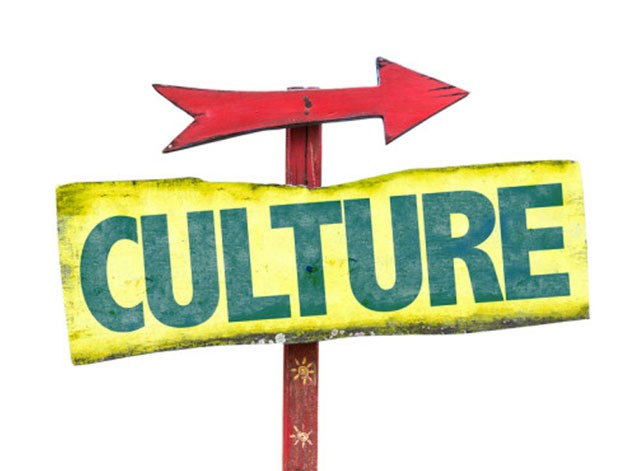News - Advertising
Advertising Culture Club
April 26, 2019
.jpg) Advertisement
AdvertisementIn theory, advertising should be an integral part of culture. It should both draw from, and contribute to, the wider culture of society. It should not be viewed as trash, clutter or junk. This is the traditional view of advertising.
As Jennifer Fischer, chief innovation officer at TBWARaad, points out, Jean Marie Dru’s first book about ‘Disruption’, published in 1996, had 33 pages that mention the word ‘culture’. Yet in the ensuing years its importance waned, with traditional cultural reference points reduced in importance amidst the onslaught of digital communication and globalisation.
Now culture is back, and back in a big way. At the Dubai Lynx hardly a speech went by without it being mentioned. Even Alex Josephson, head of global brand strategy at Twitter, dropped it into his talk. It’s almost as if ‘culture’ is the new buzzword in advertising.
“I am not sure if this is a new buzzword or a necessity to go back to human words to define our industry after we dwelled too much on merging our work with innovation and technology,” says Rana Khoury, creative director at Leo Burnett Beirut. “People are attached to their culture, and today, after several decades of globalisation and uniformity, there is a need in re-defining ourselves as individuals but also within our communities. So you can’t really do a piece of communication and ignore this reality. Communication is part of people’s language, their day-to-day, their home.”
The belief is that advertising can help shape culture, or at least impact it in some way. Hence the terms ‘culture-shifting work’ or ‘culture defining work’.

“To connect with those cultural edges, brands need to keep their fingers on the pulse, be agile, react fast to new trends and move seamlessly from insights to ideas to produce content that triggers conversations.”--Jennifer Fischer, chief innovation officer at TBWARaad
“The desire to create impact with work is not new, but framing it within the context of shifting culture gives it a higher purpose,” says Noor Hassanein, director of strategic planning at Impact BBDO Dubai. “Meaning that we can go beyond selling products and services and effectively affect change in the world in which we live.
“Work that shifts culture also has a lasting effect on society, meaning it won’t be simply forgotten with the next ‘catchy-campaign’. But we must always remember that culture doesn’t shift overnight, and sometimes in advertising we think in quarters, but truly impacting culture is a longer term strategy. Think of Dove’s ‘Real Beauty’ for instance, whose effect on the brand and society, as well as other advertisers, has been profound. The shift it brought about in promoting a body-positive mindset is often associated with its ‘Real Beauty Sketches’ campaign, when in fact the brand had begun years prior on working to shift the culture around beauty and how we perceive it.”

“Work that shifts culture also has a lasting effect on society, meaning it won’t be simply forgotten with the next ‘catchy-campaign’.”--Noor Hassanein, director of strategic planning at Impact BBDO Dubai
True culture-shifting work that is sparked by a brand is rare, says Fischer. Because to impact something as powerful as culture you need the right scale and reach. You also need to be both consistent and persistent.
“A one-off activation at a small scale can’t shift culture (even if it makes a great case study video),” says Fischer. “If you look at movements that have truly impacted culture across history – including the ongoing #Metoo – you see that it takes a long time for momentum to build, shared meaning to evolve, behaviours to change.
“For brands to have this kind of impact on culture, consistency is key. And that’s easier said than done when the average tenure of CMOs is shrinking, when agencies are being asked to work on a project-basis or yearly contracts, when award shows reward more often than not one-off activations, and when the industry is obsessed with short-term tactical communication.”
It’s a two-way street, of course. Communication is impacted by culture, just as culture (in all its guises) can be impacted by communication. But if brands want to be part of culture, there’s more than one way to do it. None of which are easy.
“Culture is fluid and always in motion,” says Fischer. “Brands can be a part of culture through big movement-like transformations and shifts, but they can also simply take part in cultural moments and conversations through more immediate and reactive opportunities. This keeps the brands relevant and in the ‘now’. To connect with those cultural edges, brands need to keep their fingers on the pulse, be agile, react fast to new trends and move seamlessly from insights to ideas to produce content that triggers conversations.”

“…Today, after several decades of globalisation and uniformity, there is a need in re-defining ourselves as individuals but also within our communities. So you can’t really do a piece of communication and ignore this reality.”--Rana Khoury, creative director at Leo Burnett Beirut
Culture is a subjective term and notoriously difficult to define, says Hassanein. But for advertising to genuinely impact culture, timing is key.
“The impact of advertising on culture and society has been analysed in a great deal of depth since the early 1970s, albeit often in a negative light,” says Hassanein. “Fact is, this is work which is created in order to influence audiences and create impact on a mass scale, therefore it is only natural that often this will happen on a level that goes beyond product, brand or category and seep into the culture of the audiences.
“However, we must recognise that we do not do this in a vacuum. It’s all about timing and knowing what your audience is ready for. Our role is to have our ears to the ground, so we can recognise movements as they are budding and find valuable ways to grow and amplify them. As Victor Hugo said: ‘There’s nothing more powerful than an idea whose time has come.’”



.jpg)





.jpg)




